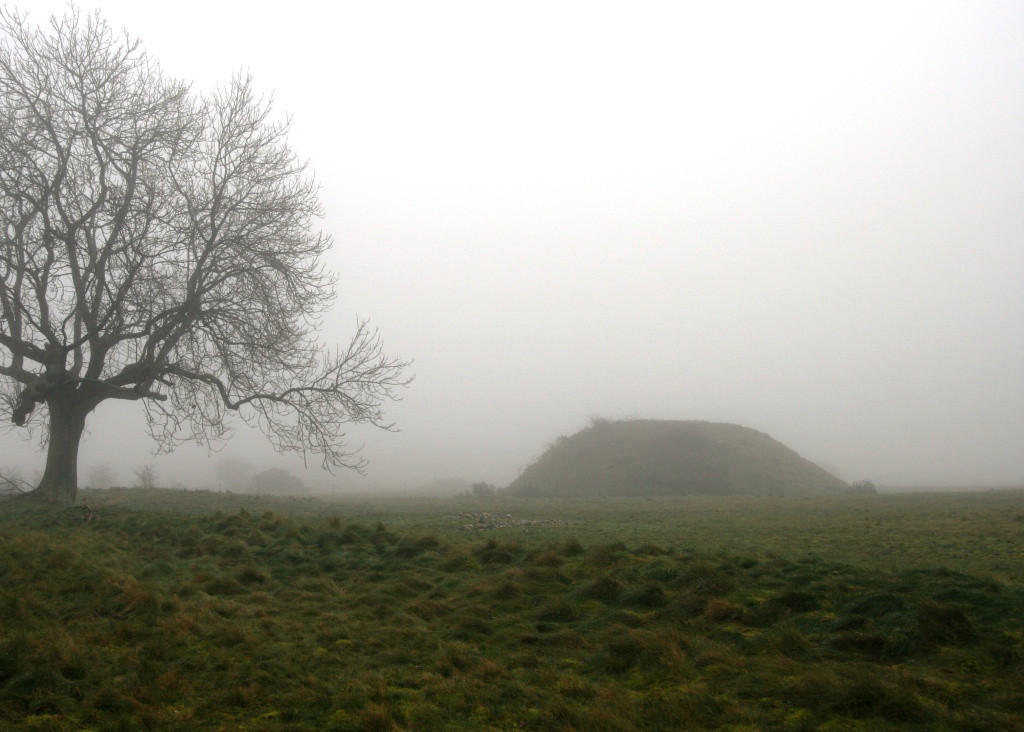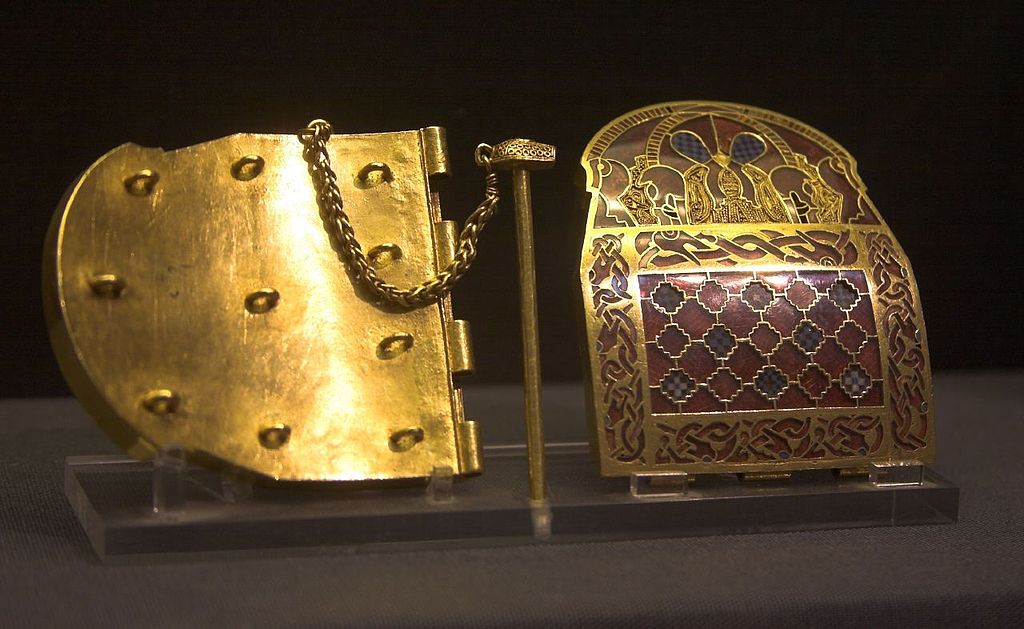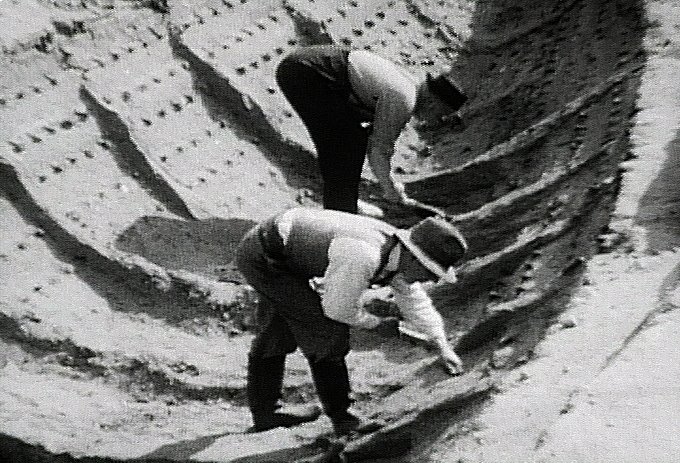In 1939, on the eve of WWII, an incredible archaeological find was dug out of a quiet meadow in Suffolk, England. At Sutton Hoo, under enormous burial mounds, excavators found an Anglo-Saxon ship like nothing ever seen before in Britain. The discovery caused a major stir and totally changed historians’ concept of England in the early Middle Ages.
A Ship Buried In The Earth
The central burial mound covered a 90-foot-long wooden ship. The ship’s timbers had rotted out long before but the shape of it was clearly imprinted in the soil. In the middle of it there was a burial chamber filled with incredible artifacts. Whatever body had been there had most likely dissolved in the acidic soil, but the artifacts were those of a member of royalty, possibly King Rædwald of East Anglia.
 User:Amitchell125, Wikimedia Commons
User:Amitchell125, Wikimedia Commons
Royal Treasures Hauled Up Out Of The Ground
One of the most amazing finds was an ornate decorated iron and gold helmet, inlaid with garnets and shaped with a distinctive faceplate. There were also silver bowls, Byzantine spoons, fine crafted weapons, and gold belt buckles of painstaking craftsmanship. The discovery of imported items like these were the unmistakable features of a society far more advanced than people could’ve imagined.
A Bold Challenge To Our Assumptions
Before Sutton Hoo, the Anglo-Saxon era was mostly written off as a cultural backwater deep down in the pit of the Dark Ages. The rich artistry of these finds threw a monkey-wrench into that narrative, revealing a sophisticated culture with wide-reaching trade routes and plenty of artistic and technical skills.
A Portal To The Anglo-Saxon World
The burial gave clues into the spiritual lives of the Anglo-Saxon people. A blend of pagan symbols and Christian artifacts were signs of a society in religious transition. The care taken in the burial itself was reflective of deep beliefs about kingship, the afterlife, and social status, giving scholars lots to chew on for further research ideas.
The Role Of Edith Pretty
None of this priceless treasure trove would’ve been found had it not been for Edith Pretty. She was the landowner who ordered the dig. She believed deeply in the mounds’ historical importance, and hired archaeologist Basil Brown, who commenced digging at once. Pretty's intuition and determination were key factors in the discovery.
 British Museum, CC BY-SA 2.5, Wikimedia Commons
British Museum, CC BY-SA 2.5, Wikimedia Commons
The British Museum’s Star Exhibit
In the days after the discovery, the artifacts were entrusted to the British Museum for safekeeping. The timeless treasure trove is now one of the Museum's most prized exhibits. The artifacts showcase Anglo-Saxon artistry and provide us with one of the most complete examples of a royal ship burial in Europe. Millions of people still flock to visit the Sutton Hoo collection at the Museum each year.
A Turning Point In Archaeology
The Sutton Hoo dig was a turning point in British archaeology. It proved the value of careful and methodical excavation. A lot of people came to a new realization of how important it is to maintain historical sites. It also sparked a renewed interest in early medieval studies and inspired generations of archaeologists and historians.
 Harold John Phillips, Wikimedia Commons
Harold John Phillips, Wikimedia Commons
Inspiration For Books And Movies
The story of Sutton Hoo is a part of popular culture. It has inspired books, documentaries, and the 2021 Netflix film The Dig. The story’s dramatic elements are tough to top: a mysterious grave; a forgotten king, a pioneering woman; and a race against time.
A New Take On Early English Identity
Sutton Hoo brought a whole new understanding of early English identity. Instead of a chaotic land of tribal warlords, the site showed us an Anglo-Saxon society that was sophisticated, ambitious, and deeply connected to the broader world.
You May Also Like:
The First Rulers Of Kingdoms And Empires








